Channel Islands National Park is located just an hour’s boat ride off the Southern California mainland, but feels worlds away. Camping is available on all five islands within the national park, in varying degrees of primitiveness. However, the rustic nature is a special experience, allowing you to appreciate the land as it has existed unchanged for millennia. This guide details everything you need to know about Channel Islands camping, including amenities, campsite locations, and more.
Jump to:
Channel Islands Camping: Overview and Need-to-Know Info
Getting to Channel Islands National Park
You can get to any of the five islands via ferry from Ventura Harbor. All trips are operated by Island Packers, the official boat partner of the National Park Service.
Island Packers offers year-round transportation to Santa Cruz and Anacapa islands. However, trips to the more remote islands (Santa Rosa, San Miguel) only run between March – November each year.
(Island Packers transportation to Santa Barbara Island hasn’t been available since a storm damaged the landing pier in 2015. However, Santa Barbara is still accessible via private transportation.)
We strongly recommend booking your tickets online in advance, as ferries can sell out during the high season.
Best Time of Year for Channel Islands Camping
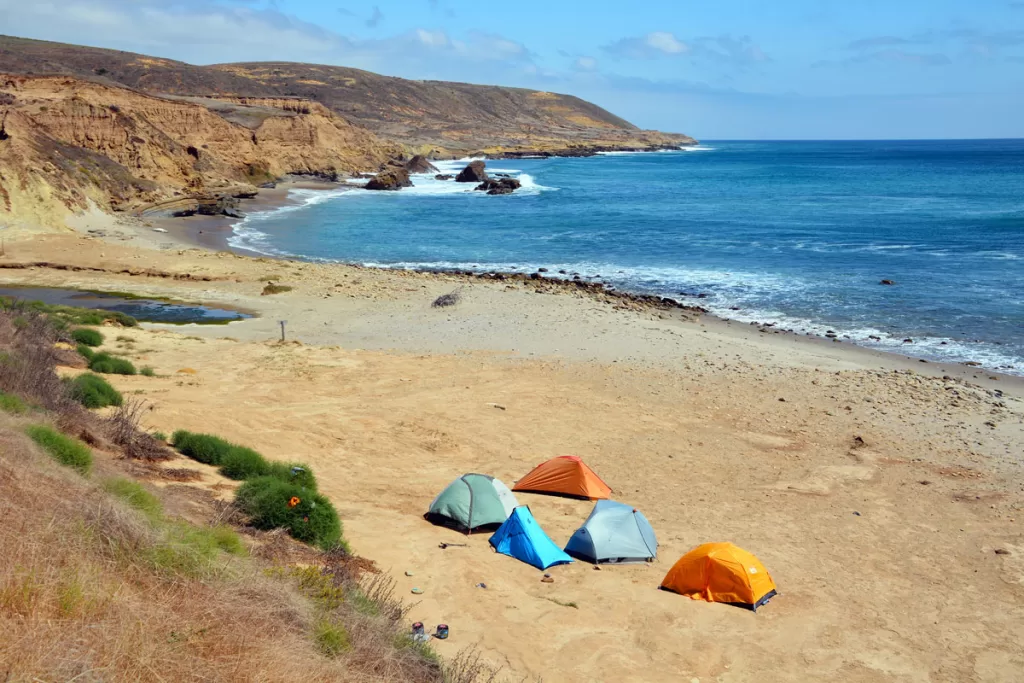
Camping is (technically) available year-round on all five of the islands that encompass Channel Islands National Park. But as noted above, transportation to some of the further islands is seasonal. For those, off-season camping requires private transportation.
With a coastal, Mediterranean climate, weather is temperate year-round. You can usually expect the following weather patterns, depending on the time of year you go:
- April: ocean temperatures will be chilly, but hillsides should be lush after the winter rains. You’ll often see spring wildflowers blooming.
- May – June: the early summer months typically arrive with a thick marine layer, a uniquely Southern Californian weather pattern that locals refer to as “May Gray” and “June Gloom.” While temperatures aren’t necessarily cold (hovering in the mid 60s Fahrenheit) sunshine may not be as frequent.
- July: morning fog usually gives way to sunshine every day, although ocean temperatures don’t fully warm until later in July.
- August – October: these are the most pleasant months, with both abundant sunshine and the warmest of ocean temperatures (which can get up to almost 70 degrees Fahrenheit in August and September).
- November – March: the weather cools to daytime temperatures in the 50s-60s Fahrenheit. Days can often be crisp and clear, although these months will be balanced with some winter rainstorms. The ferry crossing will frequently be choppier during these months, but wildflowers start blooming in February and get particularly lush in March.
How to Book a Campsite
Advance reservations are required for all campsites on Channel Islands. Sites can be booked up to six months out from your trip, via Recreation.gov. Simply search for your desired campsite and corresponding dates.
Channel Islands Camping Facilities
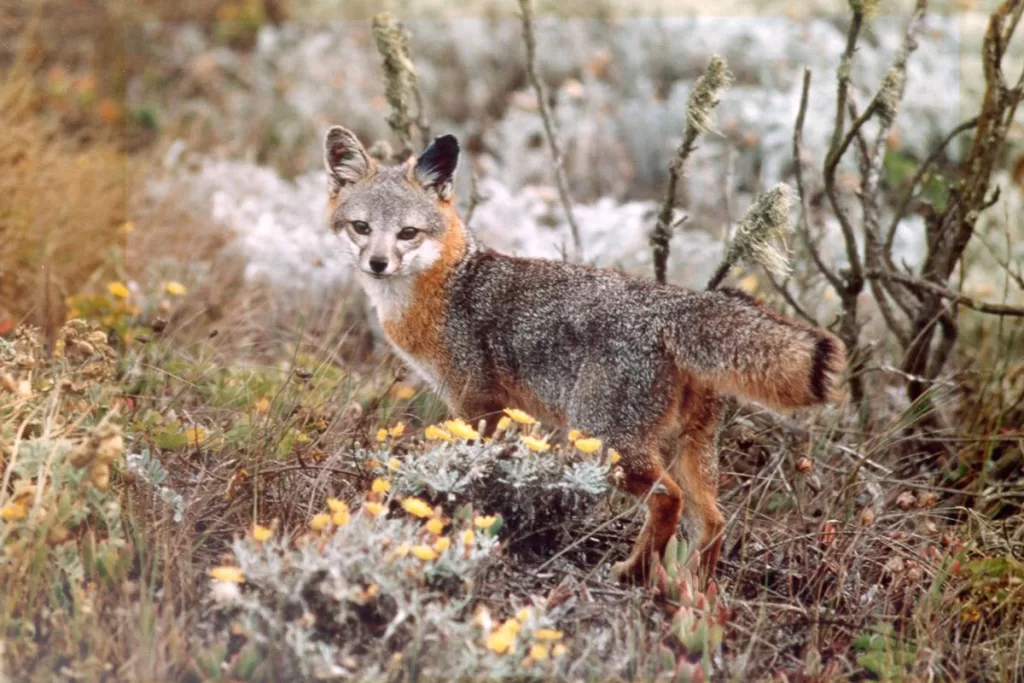
Amenities: All campgrounds are primitive, and you must carry in everything you require for your stay (including food, and in some cases, water).
Note that not all campsites have drinking water available. Where water is unavailable, you must carry in your own supply. Be mindful of the ferry schedule, as some of the more remote islands may require you to bring enough food and water for 3 days.
All campgrounds do have pit toilet bathrooms, and each site has a picnic table. There are no trash receptacles on the islands, so you must pack out all your trash.
On-Island Transportation: There is no transportation on the islands, so you’ll need to carry all gear from the boat dock to your campsite.
Campfires: Fires are not allowed at any campsite, so you must rely on gas camp stoves for cooking.
Wildlife: Island foxes, mice, and the always-intelligent crows are all common (and brazen) campground visitors. Each campsite has a designated metal locker, and campers are required to store all food and drink in these or other animal-proof containers. Remember to keep your tent zipped at all times, too!
Channel Islands Camping: an Island-by-Island Guide
Channel Islands camping is an experience you won’t soon forget. To help determine which island is best for you, we’ve organized this guide in order of popularity, from the most frequently visited (Santa Cruz) to the most remote (Santa Barbara).
Santa Cruz Island
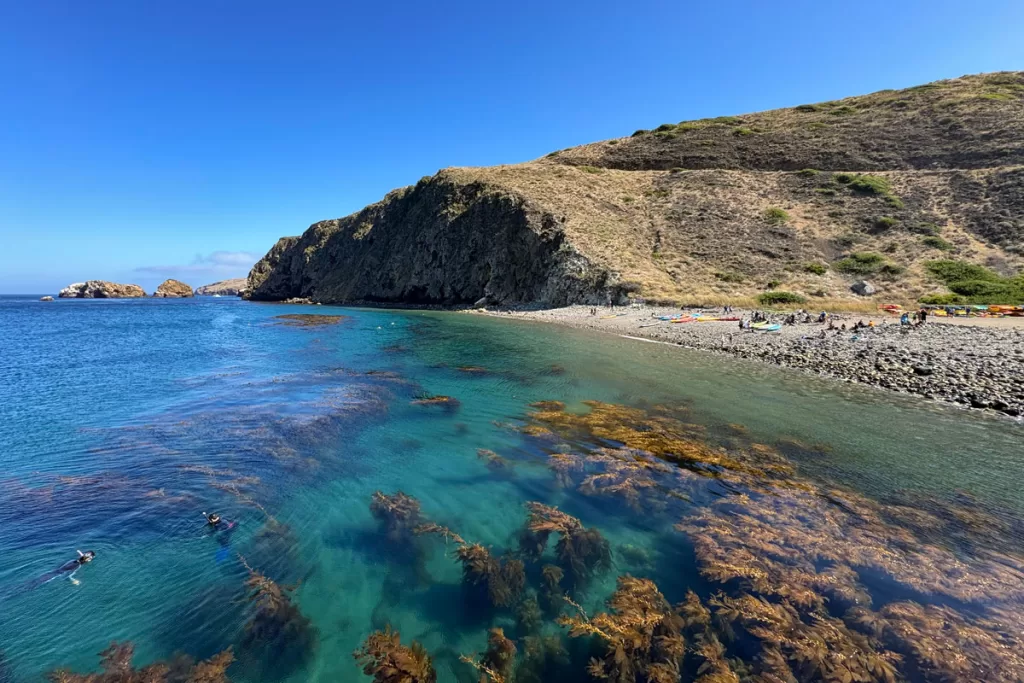
Santa Cruz is the park’s most popular island for camping. The majority of visitors opt for the manicured Scorpion Canyon campground, while the more adventurous can head out to Del Norte for a remote backcountry experience.
Scorpion Canyon (Campground)
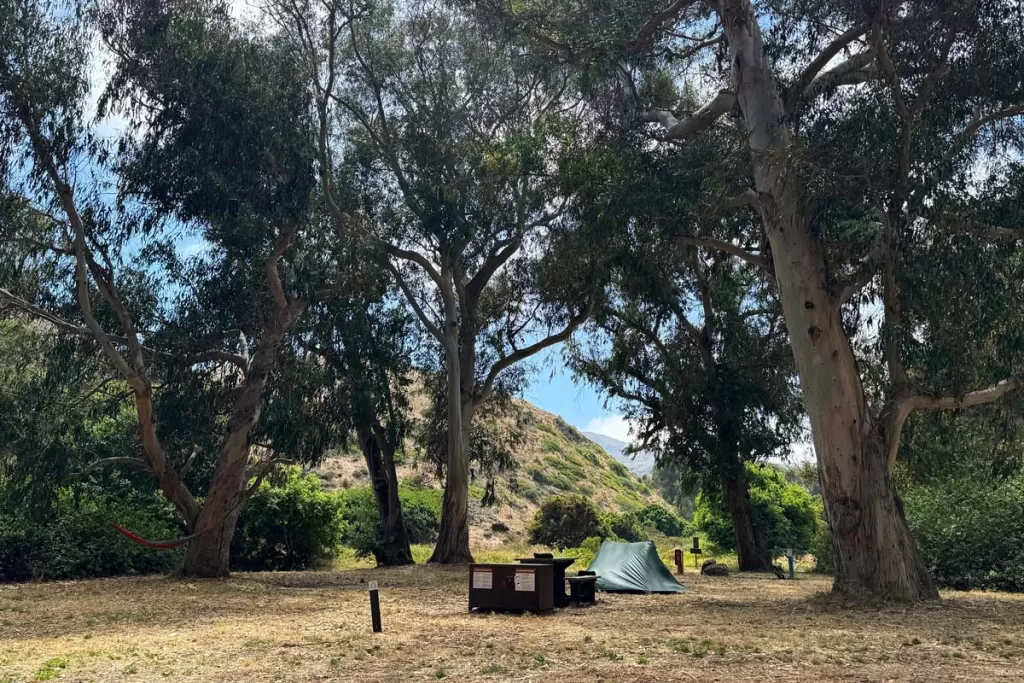
Scorpion Canyon is the largest campsite on the five islands, with 31 designated spots set back in a peaceful eucalyptus grove.
Potable Water Available: Yes
Ferry Landing Destination: Santa Cruz – Scorpion Canyon
Distance from Landing to Campground: 0.5 mile, flat
Del Norte (Backcountry)
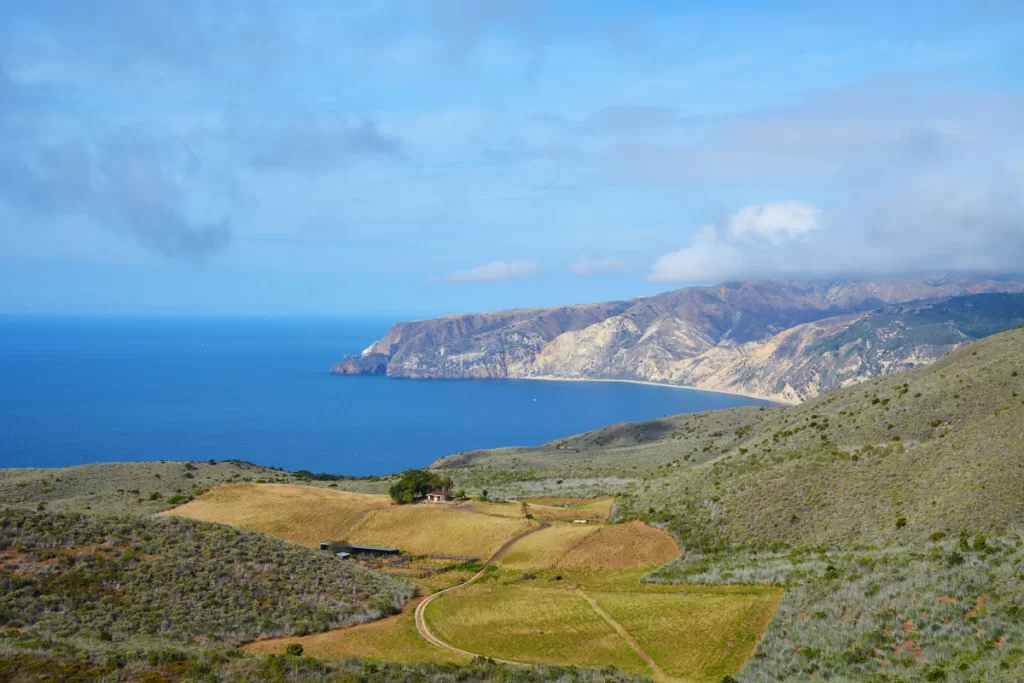
Set among shaded oaks, 700 feet above sea level, Del Norte looks out of miles of rugged coastline.
Potable Water Available: No
Ferry Landing Destination: Santa Cruz – Prisoners Harbor
Distance from Landing to Campground: 3.5 miles, with elevation gain
Anacapa Island
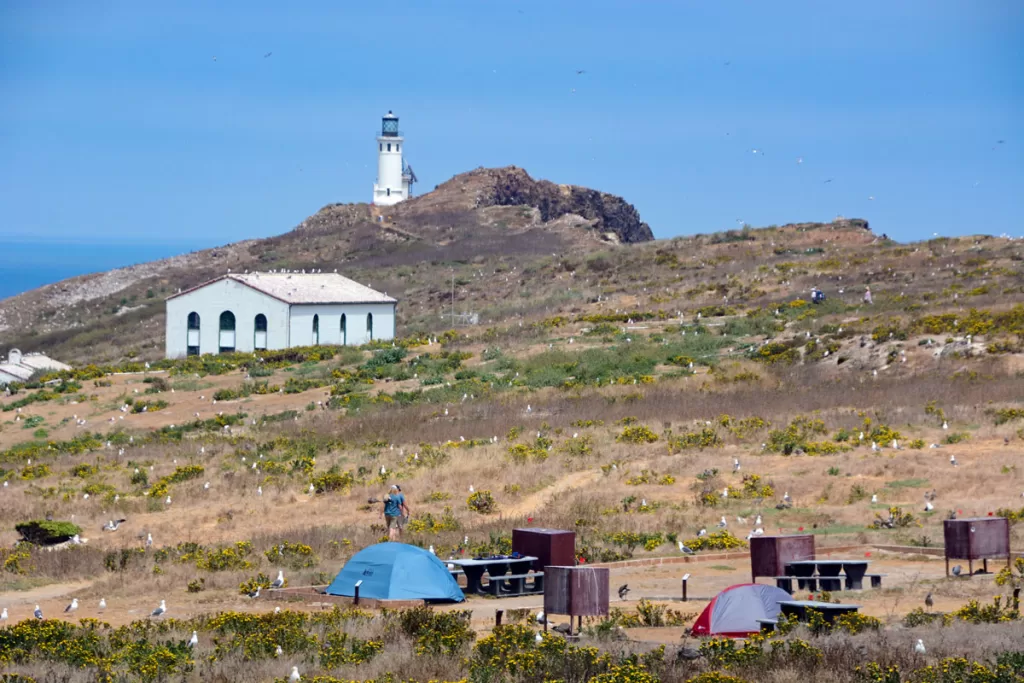
Anacapa is the second most visited island in the park. Although it only has seven available campsites, the campground makes for a dramatic setting, situated on a windswept bluff with the iconic lighthouse rising above the sea in the background.
Potable Water Available: No
Ferry Landing Destination: Anacapa Island
Distance from Landing to Campground: 0.5 mile, with 157 stairs
Santa Rosa Island
Like Santa Cruz island, Santa Rosa offers two options: a designated campground or dispersed backcountry camping.
Water Canyon (Campground)
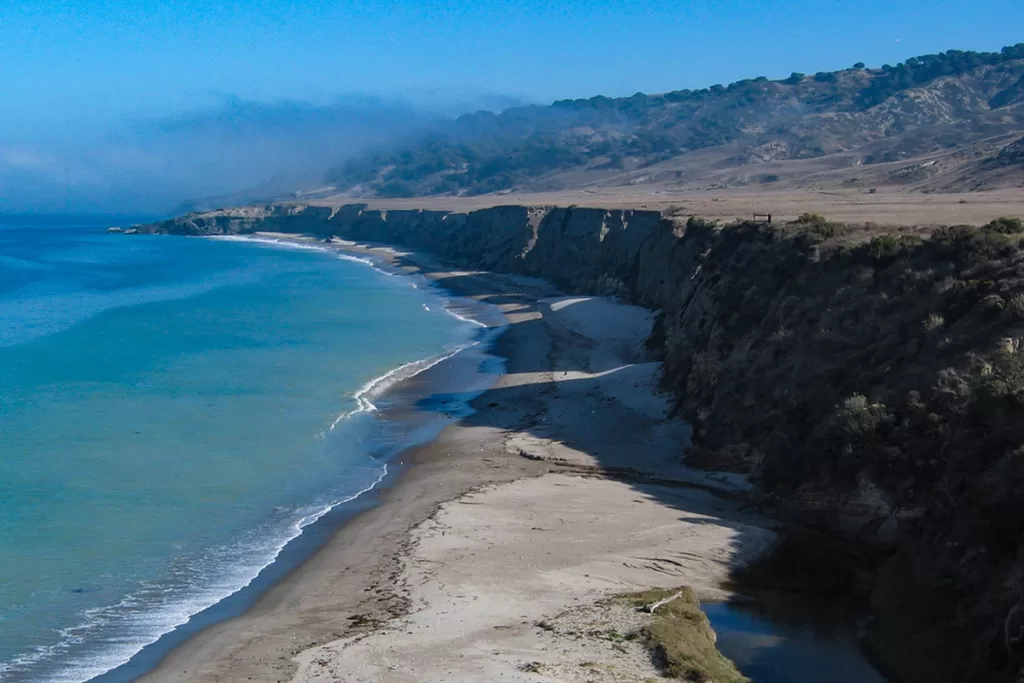
Being on the western side of the island chain, Santa Rosa often gets buffeted by strong winds coming out of the Pacific. Luckily, the campsite here sits in a protected canyon, to shield campers from the worst of the elements. With 15 sites available, it’s the second-largest campground on the islands after Santa Cruz.
Potable Water Available: Yes
Ferry Landing Destination: Santa Rosa Island
Distance from Landing to Campground: 1.5 mile, flat
Beach Camping (Backcountry)
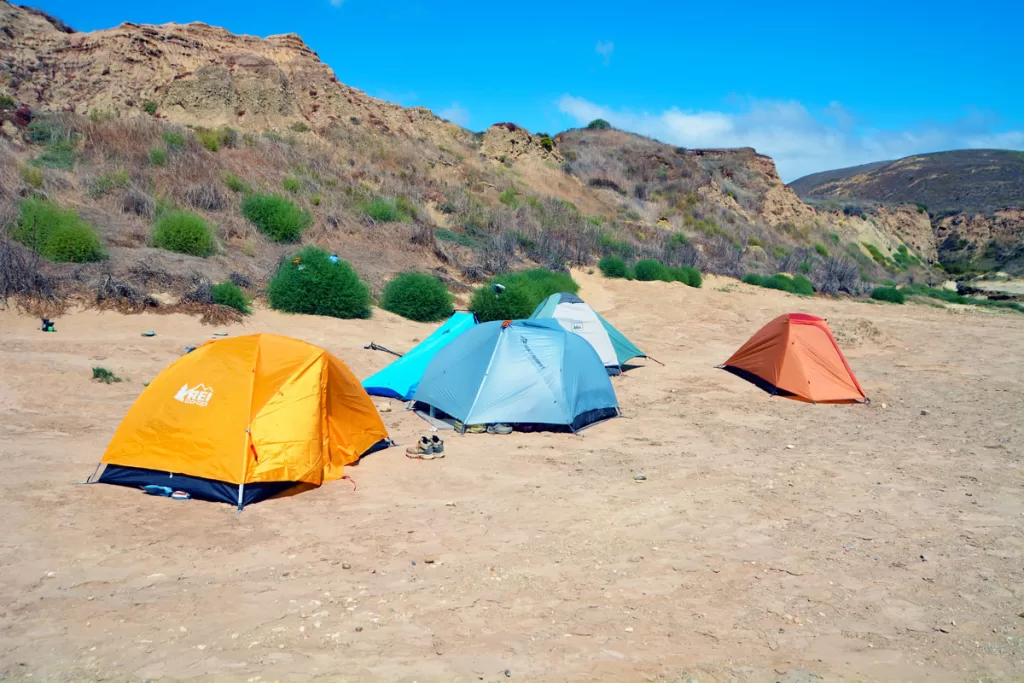
A second option on Santa Rosa is the unique experience of backcountry beach camping. During a limited time each year (usually mid-August to December) the National Park Service opens up the island’s entire 55-mile coastline to dispersed camping.
This is extremely remote, off-the-grid camping and should only be undertaken by experienced backpackers. But for those willing to undertake the added preparations, it is an unforgettable experience. You can learn more at the recreation.gov Santa Rosa Backcountry Beach Camping page.
Potable Water Available: No
Ferry Landing Destination: Santa Rosa Island
Distance from Landing to Campground: varies
San Miguel Island
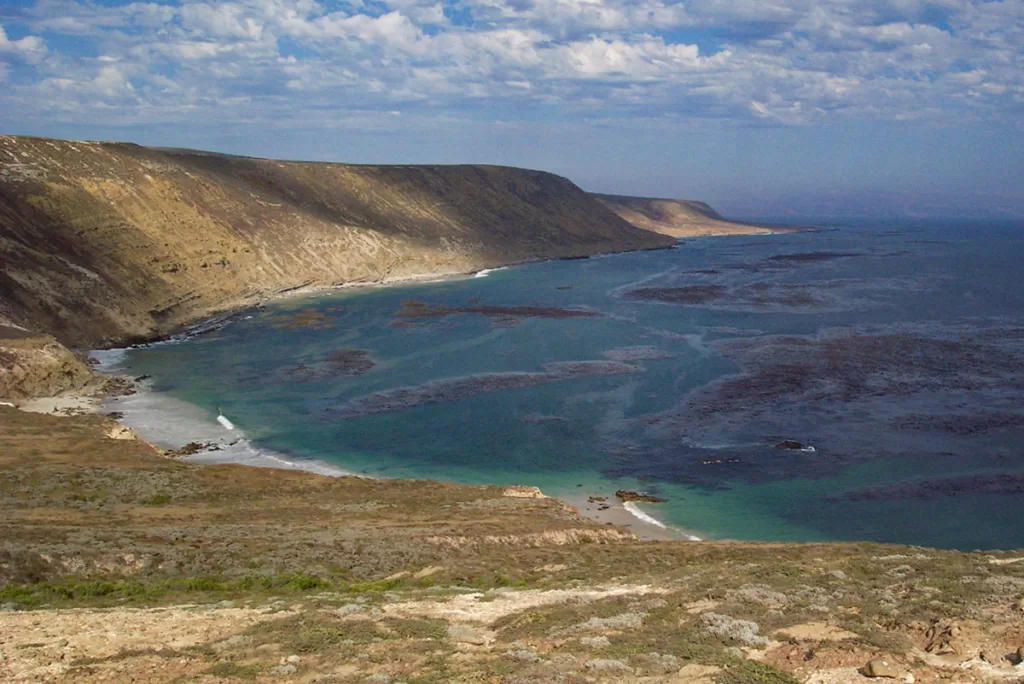
As the westernmost island in the park, smaller San Miguel is often the first landmass encountered by the wind and weather that roars out of the North Pacific. The result is a tough, rugged environment. Unlike its Santa Rosa neighbor, the campsite here sits on an exposed bluff. There’s no strong protection from the elements, but it also creates an atmospheric, windswept beauty that is a profound reminder that you’re truly on the edge of the continent.
Note: Permits are required to visit San Miguel. When you book your transportation with Island Packers, they'll provide you forms to complete.
Potable Water Available: No
Ferry Landing Destination: San Miguel Island
Distance from Landing to Campground: 1 mile, with elevation gain
Santa Barbara Island
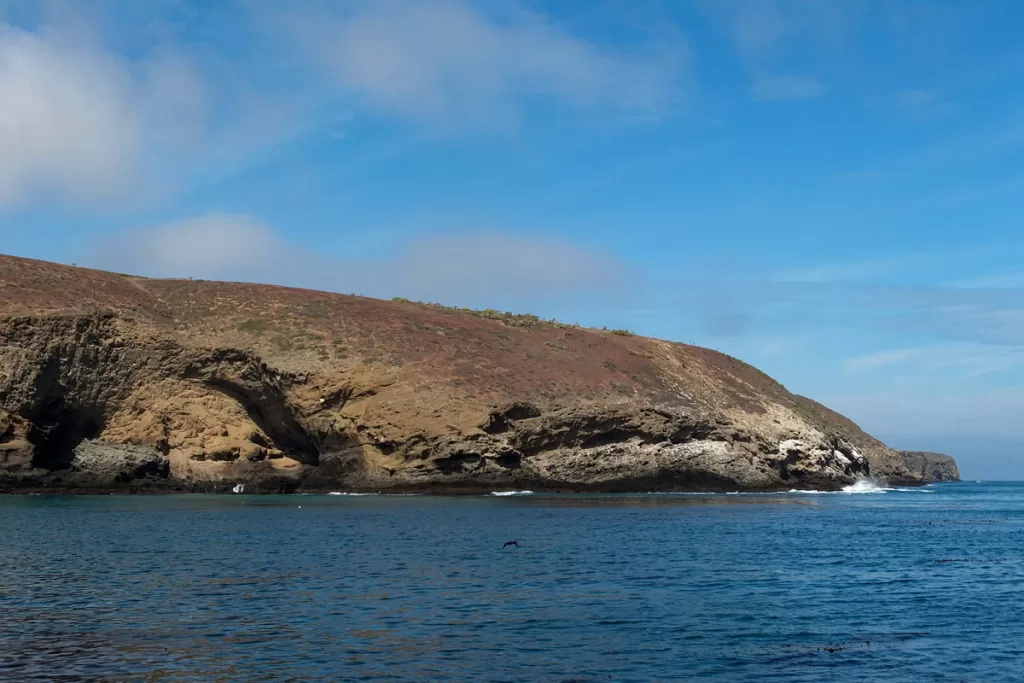
Santa Barbara is the smallest island in the archipelago, at just 1 square mile. It sits isolated, far from any other land mass, although on clear days you can make out San Nicholas Island in the distance (although not part of the national park, San Nicholas is the single most remote Channel island, and famous as the setting of the classic children’s book Island of the Blue Dolphins).
Santa Barbara is also home to a large population of sea lions, harbor seals, and elephant seals, which can make for exceptional marine wildlife viewing.
Potable Water Available: No
Ferry Landing Destination: Santa Barbara Island
Distance from Landing to Campground: 0.25 mile, with elevation gain
Note that public transportation to Santa Barbara via Island Packers hasn’t been available since a storm damaged the landing pier in 2015. However, the island is still accessible via private charter.
